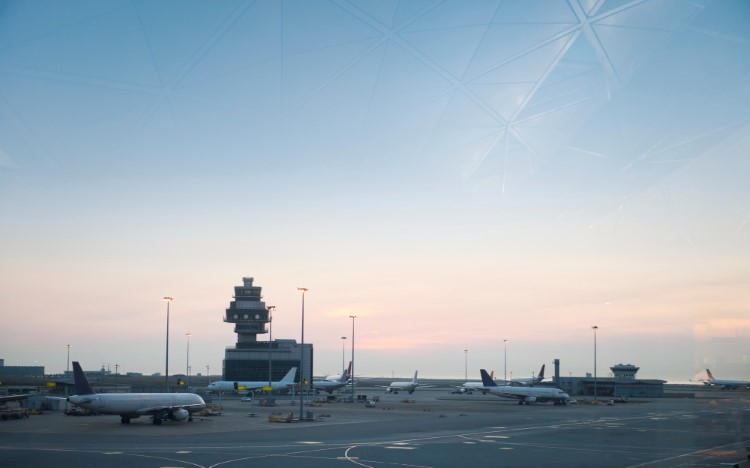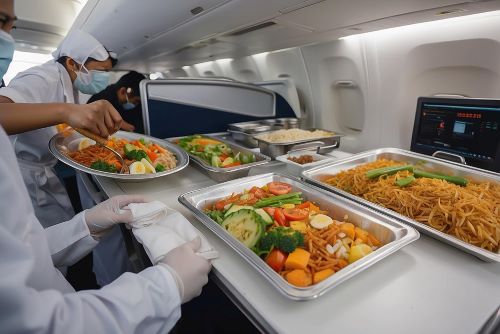Our Blog
Guide for Business Aviation In Mexico International Airport
09 October 2024
| By Just Aviation TeamMexico International Airport (IATA: MEX, ICAO: MMMX), officially known as the Benito Juárez International Airport, is a bustling hub of activity that plays a vital role in the region’s business aviation network. MEX boasts three operational runways, which facilitate the smooth flow of air traffic. Runway 05L/23R measures approximately 4,300 meters in length, while Runway 05R/23L spans around 3,900 meters. Additionally, Runway 05L/23R features a Category III instrument landing system (ILS), enabling aircraft to safely operate during adverse weather conditions.
Mexico International Airport (MEX) Passenger Statistics & Economic Impact
In 2021, Benito Juárez International Airport handled over 36 million passengers, marking a significant increase of around 64% compared to the previous year. This growth highlights the airport’s crucial role in facilitating travel and commerce in the region.
The air transport sector, including the operations at Mexico International Airport, significantly contributes to Mexico’s economy. It supports approximately 1.4 million jobs and contributes $37.4 billion to the country’s GDP, which is about 3.5% of the total GDP. The airport’s operations also facilitate trade, tourism, and investment flows, further boosting economic activities and connectivity.
Mexico International Airport (MEX) Terminals
The airport’s modern infrastructure includes two terminals: Terminal 1 and Terminal 2. Terminal 1 primarily has domestic business flights and some international destinations, while Terminal 2 caters to a broader range of international business flights. These terminals are equipped with state-of-the-art facilities to accommodate the needs of business passengers and airlines.
On average, Mexico International Airport handles a substantial number of business passengers each year. The airport’s impressive annual throughput hovers around 50 million passengers, making it one of the busiest business airports in Latin America and the Caribbean. This high passenger volume reflects the airport’s significance as a key business transportation hub in the region.
Navigational Requirements for Mexico International Airport (MEX)
When planning business flights to Mexico, operators must adhere to specific navigational requirements to ensure safety and compliance. In addition to the mandatory Electronic Locator Transmitter (ELT) and Reduced Vertical Separation Minimum (RVSM) certification, operators should consider Required Navigation Performance (RNP) certification for optimal routing, aligning with business aviation standards.
ELT Requirement
To conduct business aviation flights to Mexico, compliance with Mexican regulations mandates the presence of an Electronic Locator Transmitter (ELT) on board. The ELT is a critical piece of equipment that plays a vital role in enhancing safety during aircraft incidents or crashes. By providing emergency distress signals, the ELT assists in alerting relevant authorities and facilitates timely rescue operations. Business operators must ensure their aircraft is equipped with a functional ELT at all times, prioritizing the safety and well-being of passengers and crew.
RVSM and RNP Certifications
For business flights operating above flight level (FL) 290, it is imperative to obtain Reduced Vertical Separation Minimum (RVSM) certification. This certification enables aircraft to fly with reduced vertical separation, thereby optimizing airspace capacity and promoting operational efficiency. Meeting RVSM requirements and possessing the necessary documentation is crucial for seamless business aviation operations at higher altitudes.
Additionally, Required Navigation Performance (RNP) certification should also be considered to ensure optimal routing for business flights, adhering to established standards in the industry. By fulfilling these certifications, business operators enhance safety, airspace utilization, and overall efficiency during their flights in Mexican airspace.
In addition to RVSM, Required Navigation Performance (RNP) certification enhances navigational precision. When operating in Mexico, it is advisable to possess RNP-4 or RNP-5 certification, which signifies advanced navigation capabilities.
However, many airways in Mexico require at least RNP-10 certification. Airways starting with UT, UQ, UR, or UB necessitate RNP-10 certification, while those starting with V or J can be used if RNP-10 certification is not available.
Slot Times in Mexico International Airport (MEX)
On a daily basis, Mexico International Airport (MEX) typically handles a substantial number of business flights. The airport operates within a limited capacity, with a maximum number of available business slots per day. Currently, MEX has around 500 slots available for business aircraft operations.
Each business slot represents a specific time window during which an aircraft is allocated to arrive or depart. These time slots are typically 15 minutes in duration, allowing for precise scheduling of business flights. This systematic approach helps minimize congestion, optimize runway usage, and ensure smooth business operations at the airport.
Furthermore, slot times at MEX are regulated by the Mexican Airport Coordination and Slots Allocation Committee (COCA). This committee oversees the allocation and management of business slots, ensuring fairness and equitable distribution among business airlines operating at the airport. Business operators must submit slot requests to COCA in advance.
The slot request includes details such as business flight number, aircraft type, desired arrival or departure time, and frequency of operation (daily, weekly, etc.). Slot requests must adhere to the designated schedule coordination periods specified by COCA, following the established guidelines for business aviation operations.
Landing Permits and Limitations for Mexico International Airport (MEX)
For business aviation operators planning to land at Mexico International Airport (MEX), obtaining the necessary landing permits is a crucial step in ensuring compliance with the country’s aviation regulations.
- Landing Permit Application
- Air Operator Certificate (AOC)
- Aircraft Certificate of Registration
- Airworthiness Certificate
- Certificate of Insurance
- Pilot Licenses and Medical Certificates
- Noise Certificate
- Flight Itinerary
- Passenger Manifest
Also, Mexico International Airport (MEX) enforces certain landing time limitations to effectively manage air traffic and ensure safe and efficient operations.
- Curfew: In line with business aviation regulations, Mexico International Airport (MEX) observes a night curfew to ensure minimal disruption during designated hours. The curfew at MEX is typically enforced from 23:00 (local time) to 06:00 (local time). During this period, only emergency and humanitarian business flights are allowed to operate, subject to prior approval from the airport authorities. This measure ensures the tranquility of the surrounding areas while prioritizing essential operations.
- Noise Restrictions: MEX prioritizes noise abatement by implementing stringent noise restrictions tailored to business aviation needs. These restrictions are based on aircraft types and their respective noise certification levels. The International Civil Aviation Organization (ICAO) categorizes aircraft into different noise categories, such as Chapter 2, Chapter 3, and Stage 3. Compliance with these classifications is crucial, as the operation of noisier aircraft, such as Chapter 2, may be limited or subject to specific conditions to mitigate noise impact on the airport’s neighboring communities. By adhering to these regulations, business operators contribute to the airport’s commitment to environmental sustainability and community well-being.
Blanket Permits for Mexico International Airport (MEX)
When it comes to operating charter flights in Mexico’s business aviation sector, blanket permits offer a unique advantage. These permits, devoid of any expiration date, allow for multiple business aircraft to be listed under a single authorization. Furthermore, business operators can modify blanket permits by adding or removing aircraft or updating operator details. However, it’s essential to note that the inclusion of a new business aircraft requires processing and approval by the Mexican Civil Aviation Authority (AFAC), ensuring compliance with business aviation regulations.
- Ongoing Compliance and Reporting: Operators holding blanket charter permits are obliged to submit monthly statistical reports detailing any flight activity to Mexico, regardless of whether there were flights conducted during that particular month. These reports must adhere to a specific format, which can be conveniently filed by your designated third-party provider.
- Lead Time and Revision Process: For operators considering a blanket charter permit or seeking to make amendments to an existing one, it’s crucial to allocate a minimum of 90 business days for processing. AFAC may request additional information or seek clarification on documentation before issuing the permit.
Despite the absence of expiration dates on blanket permits, operators must submit a yearly payment and verification to AFAC. Additionally, a statement confirming compliance with all legal requirements and absence of any unlawful infractions is also necessary.
Parking Fees at Mexico International Airport (MEX)
Parking fees for business aircraft at Mexico International Airport (MEX) vary depending on several factors, including the type of aircraft, duration of parking, and the specific parking area used. MEX typically offers an hourly parking rate for short-term stays, tailored for business aviation needs. The hourly rate can range from approximately $30 to $50 USD per hour, depending on the aircraft category and parking location.
For longer-term parking solutions, MEX’s daily rates are designed to accommodate business operators. The average daily parking fee at MEX ranges from approximately $150 to $340 USD per day for small to medium-sized business aircraft. It’s important to note that larger business aircraft may incur higher fees due to their size and specific parking requirements. As prices may vary over time, it is advisable for individuals to contact our team directly to obtain up-to-date and accurate information.
Ground Handling at Mexico International Airport (MEX)
Aviation operation on Mexico City International Airport (MEX) compass private jet operators a range of ground services including refueling, towing and baggage handling. These services are essential requirements for the safe and efficient operation of private jet aircraft and require a high level of technical expertise and detailed attention.
Fuel Supply in Mexico Airports
Mexico International Airport features several types of aviation fuel, primarily Jet A and Jet A-1. Jet A is a kerosene-based fuel with a freezing point of -40°C, suitable for a wide range of jet engines. Jet A-1, a variant of Jet A, has a lower freezing point of -47°C, making it ideal for international flights operating in colder regions. Both types are essential for different aircraft operations depending on their destinations and operational requirements.
At MEX, fuel storage facilities include above-ground tanks and underground reservoirs with a significant combined capacity, ensuring that the demands of various aircraft sizes and operational schedules are met. The storage system is equipped with advanced filtration and monitoring systems to ensure the quality and safety of the fuel. Regular maintenance and quality checks are performed to prevent contamination and ensure compliance with international aviation fuel standards.
The cost of Jet A fuel at MEX, ranging from $4 to $6 USD per gallon, is influenced by global market conditions, including crude oil prices, geopolitical factors, and local supply and demand dynamics. Pricing can fluctuate based on these variables, and airlines typically negotiate fuel contracts or engage in hedging strategies to manage costs.
Luggage Handling
Luggage handling at MEX encompasses several key stages, including check-in, screening, loading, and unloading. The process is managed using advanced baggage handling systems (BHS) that incorporate conveyor belts, automated sortation, and RFID tracking to ensure the efficient movement of baggage from check-in counters to aircraft and vice versa.
The airport employs a range of equipment, such as automated baggage handling systems, high-speed conveyor belts, and modern screening devices. These systems enhance operational efficiency, reduce the risk of mishandling, and improve the speed of baggage transfer. The use of RFID tags allows for real-time tracking and monitoring, reducing the incidence of lost or delayed baggage.
Luggage handling fees at MEX, typically ranging from $2 to $5 USD per bag, can vary depending on factors like the weight and size of the baggage, special handling requirements (e.g., fragile or oversized items), and additional services such as priority handling. These costs reflect the complexity and labor involved in processing and transporting baggage.
Catering Services
Catering services at MEX include the preparation and provision of inflight meals, beverages, and other supplies tailored to the specific needs of passengers and crew. The catering operations involve menu planning, ingredient procurement, meal preparation, and packaging, ensuring that all dietary preferences and requirements are met.
The costs of catering services at MEX, ranging from $15 to $40 USD per passenger, vary based on menu complexity, passenger numbers, and customization requests. Meals are often categorized into standard, premium, and specialty options, with varying levels of sophistication and ingredients. Advance notice is crucial for preparing specialized menus or large orders, as it allows the catering team to source ingredients, prepare dishes, and ensure timely delivery.
Maintenance
Maintenance services at MEX encompass a wide range of activities, including routine inspections, repairs, and servicing of aircraft.
- Line maintenance involves routine, on-the-spot checks and minor repairs conducted between flights or during short ground periods. Costs for line maintenance for business aircraft at MEX can range from approximately $500 to $2,000 USD per task. This includes tasks such as daily checks, minor repairs, and component replacements, which are typically addressed on a short turnaround basis.
- Base maintenance encompasses more extensive checks and repairs that require longer downtime. This type of maintenance is often conducted during scheduled service intervals or major overhauls. Costs for base maintenance for business aircraft at MEX can range from approximately $5,000 to $50,000 USD or more, depending on the extent and complexity of the work required. Base maintenance includes heavy inspections, major repairs, and structural modifications.
- Engine overhaul is a comprehensive process involving the disassembly, inspection, repair, and reassembly of aircraft engines. Costs for engine overhauls for business aircraft engines at MEX can range from approximately $50,000 to $500,000 USD or more, depending on the specific engine model and the extent of the overhaul required. This service ensures that engines meet safety and performance standards, extending their operational life.
- Avionics upgrades involve the installation of new or enhanced avionics systems, which can improve aircraft navigation, communication, and monitoring capabilities. Costs for avionics upgrades for business aircraft at MEX can range from approximately $10,000 to $100,000 USD or more, depending on the extent of the upgrades and the selected equipment. Upgrades may include new flight management systems, advanced communication systems, and upgraded navigation tools.
It’s important to note that the prices provided above are average estimates and can vary significantly based on factors such as the aircraft model, maintenance provider, parts availability, and the specific maintenance needs of the aircraft.
As one of the leading companies providing business flight support service in Mexico, Just Aviation understands the importance of safe and efficient aviation operation on Mexico International Airport. With its convenient location and world-class facilities, MEX is a popular destination for private jet travel and Just Aviation is proud to provide our customers with access to this excellent airport. By following the technical details outlined in this article, private jet operators can have a hassle-free and stress-free experience flying to Mexico City.


